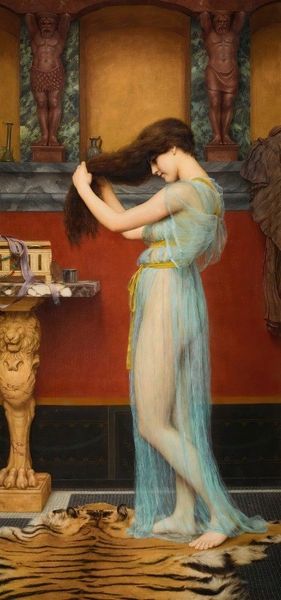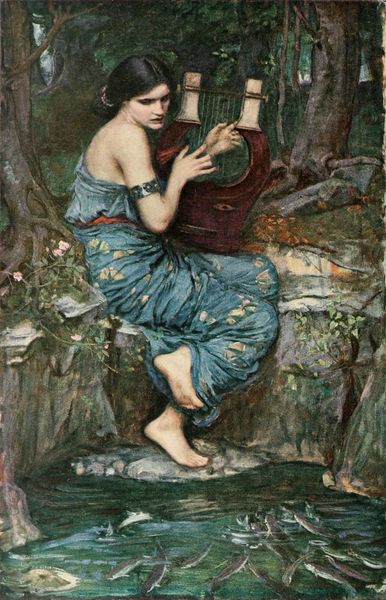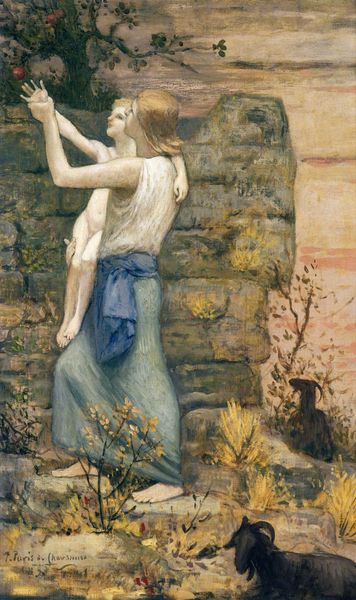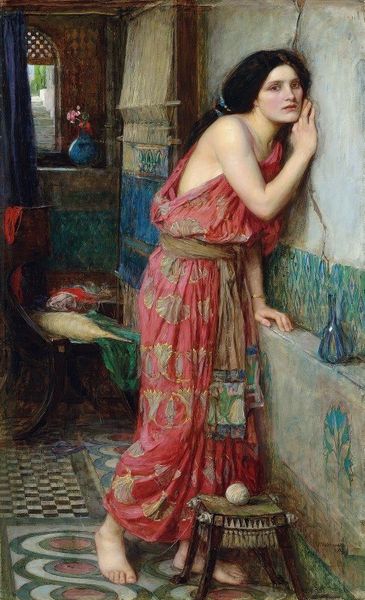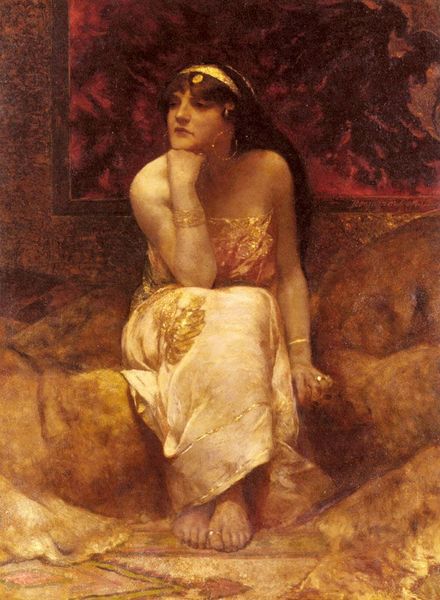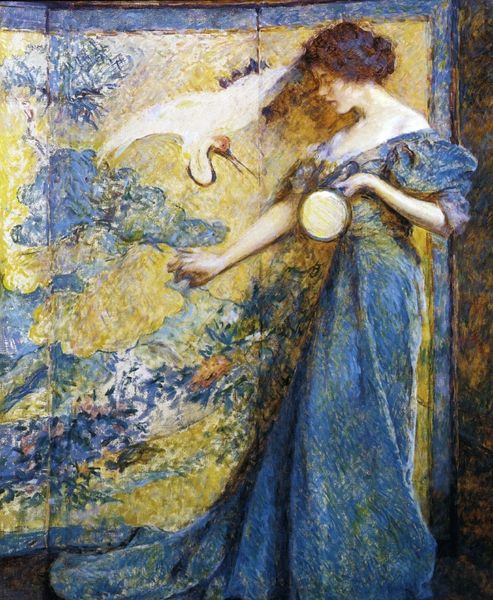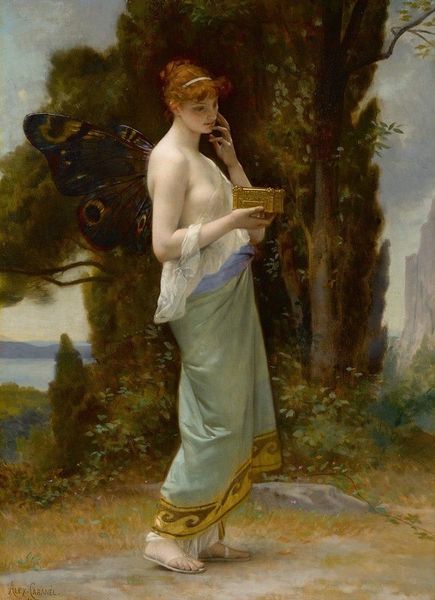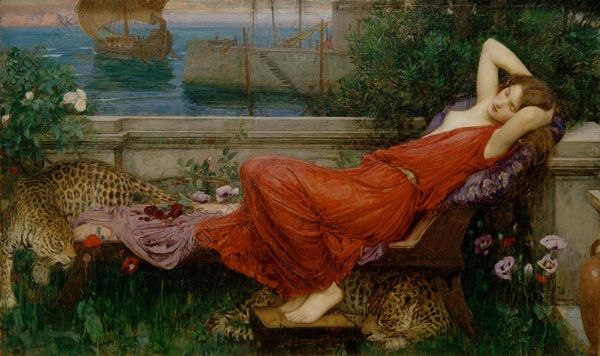
Dimensions: 91.12 x 152 cm
Copyright: Public domain
Editor: This is John William Waterhouse’s “Pandora,” painted in 1898. Looking at this Pre-Raphaelite oil painting, I’m immediately struck by the dark and ominous mood, despite the lush natural setting. The ornate box is very compelling and catches the eye right away. How do you interpret this work, considering Waterhouse’s symbolic choices? Curator: Well, at first glance, Waterhouse presents a straightforward image of temptation and consequence, pulling from the well-known Greek myth. But delve a bit deeper, and you find layers of cultural anxieties visualized. Consider the box itself, elaborately decorated. Does it strike you as a container of simple evils, or something more culturally significant? Editor: It’s beautiful, but also imposing… like something you shouldn’t touch. A little dangerous to look at. Curator: Exactly. It represents the unknown, and humanity's insatiable curiosity and it speaks to a fear of the feminine…a loss of control in the face of mystery. The woman is in the forest, perhaps representing nature. The forest and water present a primordial essence; an encounter with nature can be dangerous and unpredictable. And if the world can be unpredictable then maybe its creator must ensure control through the construction of rules. Editor: So, Pandora’s action, the opening of the box, symbolizes a kind of rebellion against order? Curator: Precisely! Look how the scene is constructed! Do you see how Pandora's face gazes into the box as if reaching towards an apex, the most important part of this encounter? She succumbs to an impulse. A temptation. And in doing so, reshapes the world around her – and by extension, us all. Editor: That makes me rethink the entire painting. It’s not just a mythological scene, but a commentary on human nature and societal fears. I had not thought about that. Curator: Indeed. These visual narratives become powerful precisely because they tap into those deeper anxieties and desires, reflecting our cultural memory and continuing to speak to us across the ages.
Comments
No comments
Be the first to comment and join the conversation on the ultimate creative platform.
